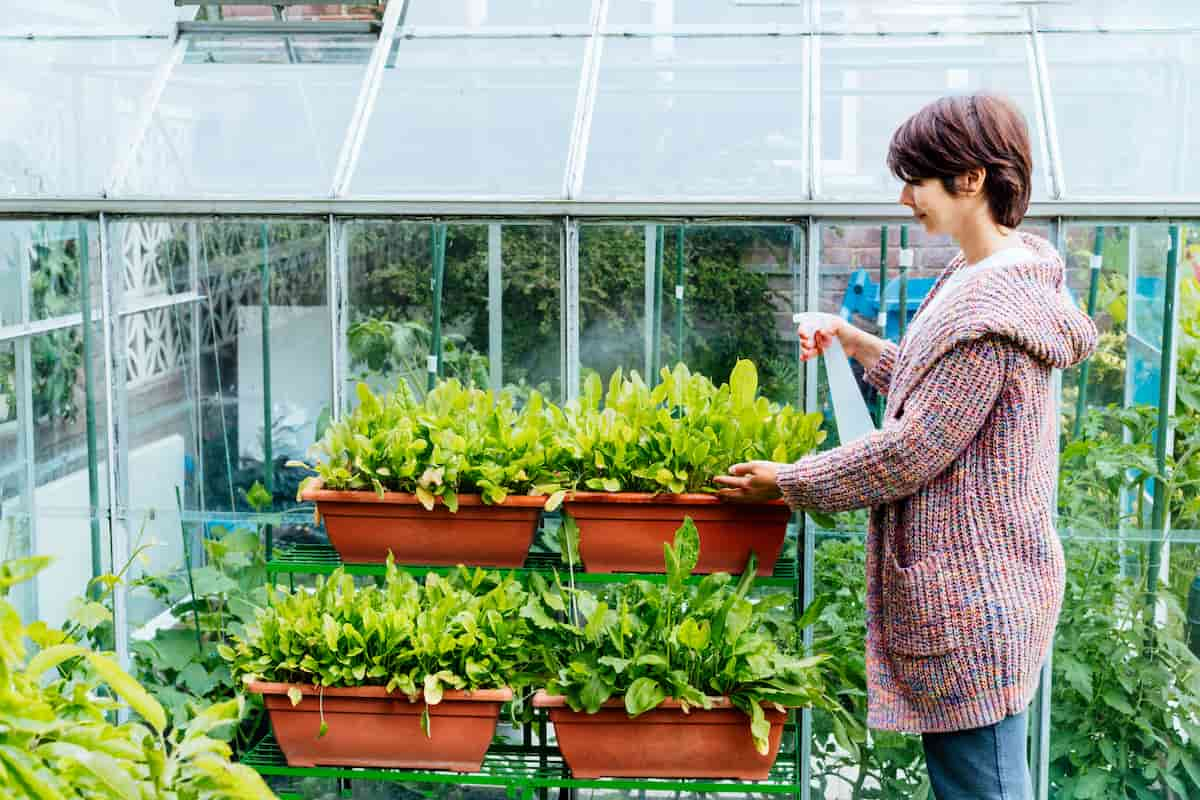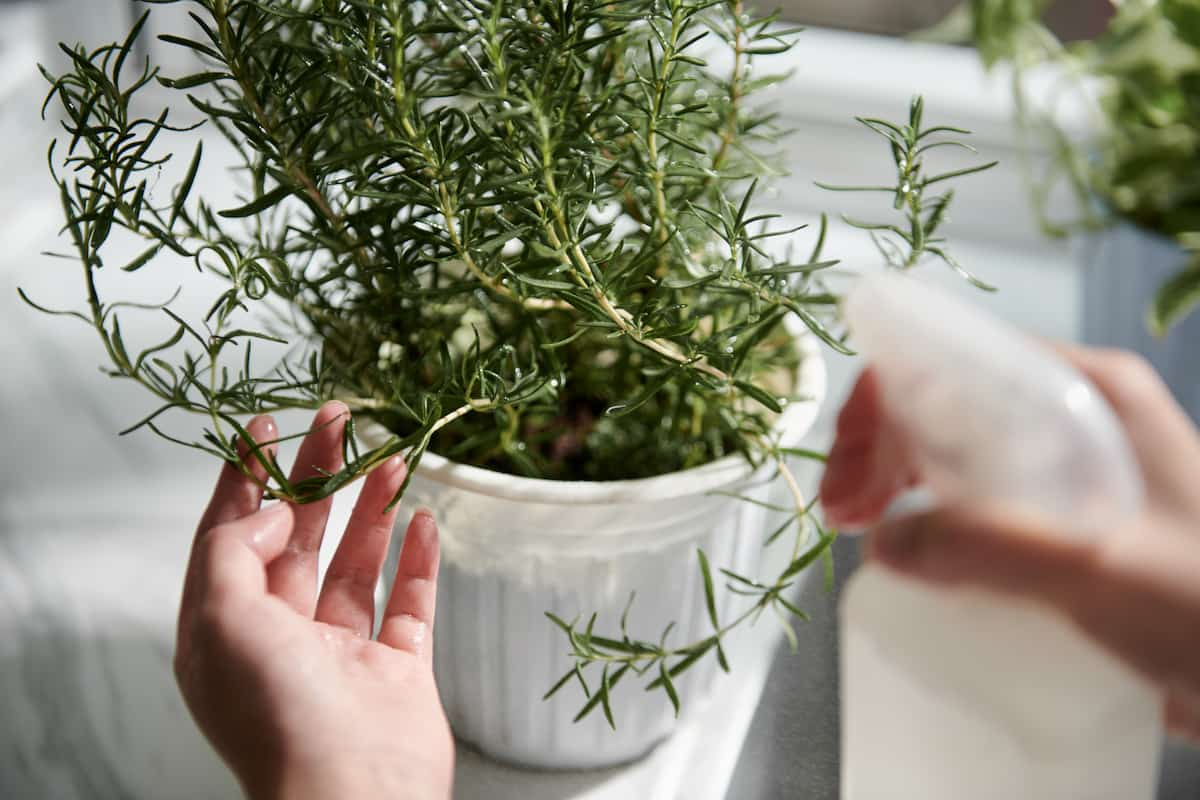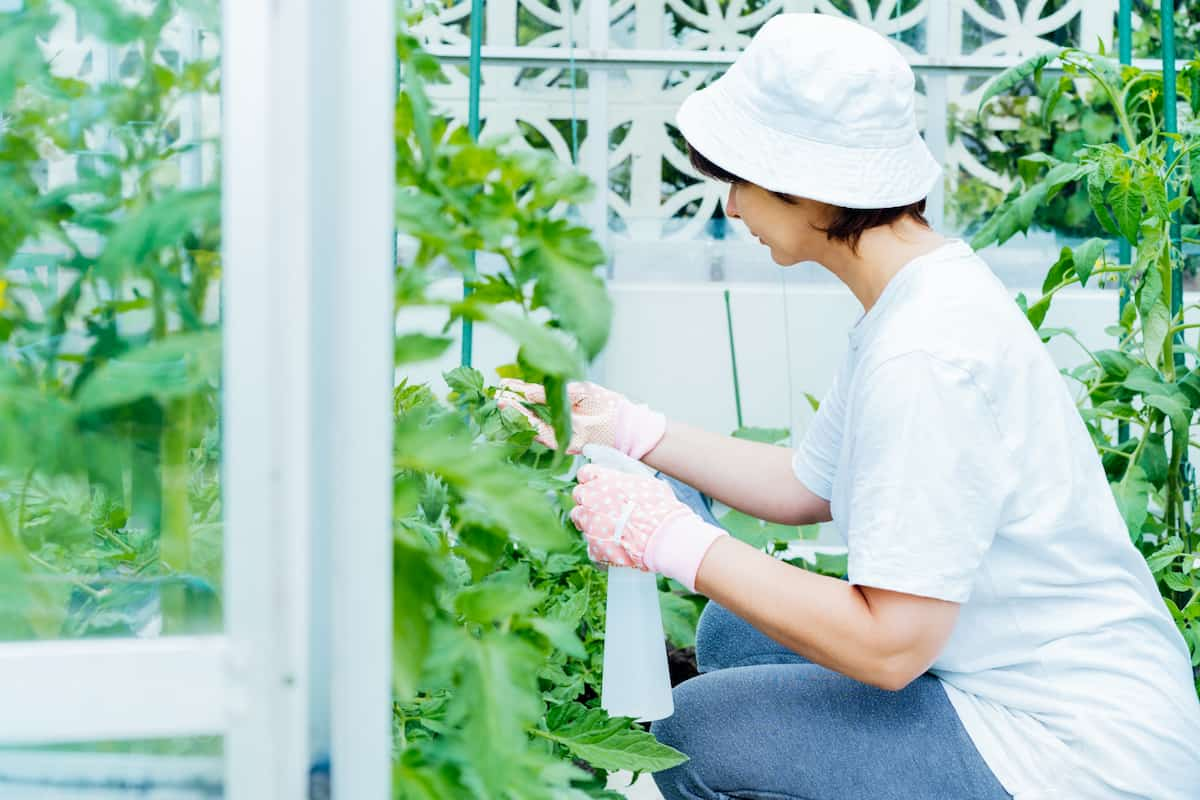A kitchen garden, a home garden, a nutrition garden, or a vegetable garden is the practice of growing fruits and vegetables in a small plot of land in or around one’s home. This type of gardening can be done in containers, raised beds, or directly in the ground. It often involves using kitchen wastewater and other organic materials to fertilize and irrigate the plants.

Kitchen gardens are becoming increasingly popular as people seek to grow fresh produce and reduce their reliance on store-bought fruits and vegetables, which may contain harmful pesticides and other chemicals. In addition to providing a source of fresh, nutritious food, kitchen gardening can also be a fun and rewarding hobby, and it can help to promote physical activity and mental well-being.
Management of Pests in Kitchen Garden
Pests of Kitchen Garden
Kitchen gardens are susceptible to pests that damage or destroy plants, reducing yields or complete crop failure.
- Aphids: These small, soft-bodied insects can appear in large numbers and feed on the sap of plants, causing leaves to curl and wilt.
- Caterpillars: These larvae of moths and butterflies can eat their way through entire plants, leaving behind large holes in the leaves.
- Whiteflies: These small, winged insects feed on the underside of leaves, causing them to yellow and wilt.
- Snails and slugs: These slimy creatures feed on the leaves and fruits of plants, leaving behind large holes and slime trails.
- Cutworms: These nocturnal caterpillars feed on the stems of young plants, cutting them down at the base.
- Spider mites: These tiny pests feed on the undersides of leaves, causing them to be yellow and dry out.
- Thrips: These small, slender insects feed on the sap of plants and can transmit viruses to them.
- Leaf miners: These tiny insects lay their eggs on the leaves of plants, and the larvae tunnel through the leaves, creating white or brown serpentine trails.
In case you missed it: Downy Mildew Management in Rose: Symptoms, Disease Cycle, Treatment, Chemical, and Biological Control

Management of Pests in Kitchen Garden by Cultural Method
- Deep summer ploughing exposes and kills insects, eggs, pupae, fungus mycelia, plant debris, and weed hosts to the sun during the hot summer months.
- Soil solarization of the nursery bed before sowing and covering with a 1 mm thick black polythene sheet for 48 hours to kill insects, fungi, nematodes, and weed seeds.
- Use of healthy seeds purchased from registered or genuine sources.
- Selection of resistant or tolerant vegetable varieties to tackle pests.
- Incorporation of well-rotted farmyard manure and neem cake in the nursery bed 15 days before sowing, followed by irrigation.
- Raised beds are followed for better drainage and to prevent water stagnation.
- The nursery bed is covered with a 40-mesh nylon net to prevent the entry of flies and sucking pests.
- Removal and destruction of infected plant parts, debris, weeds, stubble, etc. All the bunds, irrigation channels, and fence areas should be cleaned.
- Flooding of the field kills ants, termites, and other hibernating insects.
- Seeds should be sown with proper spacing to obtain good germination and healthy stout seedlings. Transplanted with recommended gap to avoid overcrowding of plants which helps reduce disease and pest load.
- Adjusting the sowing date to avoid the peak insect and disease incidences during crop growth.
- Application of press mud at 5 Kg/m2 at the sowing time.
- Judicious use of irrigation in vegetable cultivation helps in preventing a rise in diseases and pest attacks.
- The balanced nutrient application keeps crop plants’ disease and pest populations low.
- Crop rotation with vegetables belonging to different families.
- Similar or similar types of vegetables should not be grown repeatedly in the same bed or land to break the growth cycle of insects and diseases.
- Intercropping solanaceous vegetables with tall American marigolds, one row of cabbage intercropped with one row of tomato, planting one line of onion with 10-12 lines of chili, and castor plants are some of the methods used for pest management.
- Removal of alternative hosts for insect pests, particularly for polyphagous pests.
Management of Pests in Kitchen Garden by Biological Method
- Biological control methods involve using natural predators or pathogens to control pest populations.
- For example, introducing ladybugs, lacewings, or parasitic wasps can help control aphid populations.
- Applying Bacillus thuringiensis (Bt) can also help control caterpillar populations.
Management of Pests in Kitchen Garden by Organic/Natural Methods
- Biological methods are used for pest management in a kitchen garden by utilizing beneficial organisms and plants to control pests and diseases. Apart from conventional methods, plant products or extracts manage many pathogens.
- Some effective methods include seed treatment with plant extracts, spraying of neem oil or fish oil resin to control insect attack, soil drenching with Neem seed kernel extract, and the application of Pseudomonas fluorescens to control nematode population.
- Trichoderma viride or T. harzianum/ Pseudomonas fluorescens are used for seed treatment to control soil-borne pathogens.
- Spraying milk mixed with water is also an effective method to reduce vegetable infection.
- Trichogramma chilonis can be released weekly to manage caterpillar infestation in the field.
In case you missed it: Botrytis Blight Management in Rose: Disease Symptoms, Treatment, Cultural, Chemical and Biological Control

Management of Pests in the Kitchen Garden by The Chemical Method
Insecticides can be applied to plants to control various pests, including aphids, caterpillars, and beetles. There are many different types of insecticides, including those based on natural compounds like pyrethrins and neem oil and synthetic compounds like imidacloprid and carbaryl.
Conclusion
The use of chemical methods to control pests in kitchen gardens should be adopted as a last resort after considering other preventive and curative measures such as modified cultural practices, mechanical methods, use of predators and parasites, and plant-based products. While organic farming systems reject synthetic compounds, they must also ensure that the active substances registered under organic agriculture guidelines are effective and environmentally friendly.
- Beneficial Insects in Pest Management
- Natural Solutions for Pest Control in Flower Gardens
- Types of Fungicides Used in Agriculture
- Common Issues in the Fruit Development Stage of Pomegranate Farming
- Fruit Development Issues in Papaya: Easy Solutions and Treatment
- Soil-Borne Diseases and How to Protect Your Plants
- Practices to Prevent Disease Spread in the Garden
- From Wilted to Thriving: How to Treat Root Rot Naturally in Houseplants
- Natural Remedies to Cure Brown Spots on Fig Tree Leaves